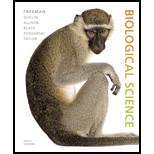
Concept explainers
Introduction:
The reproduction in which the offspring arises from a single organism and genes of only one parent are inherited is called asexual reproduction. The fusion of gametes, changes in the chromosomes, and crossing over are not involved in asexual reproduction.
Answer to Problem 1TYK
Correct answer:
The term parthenogenesis refers to a mode of asexual reproduction, which involves the development of the offspring from unfertilized eggs.
Explanation of Solution
Explanation/Justification for the correct statement:
Option (a) is given as parthenogenesis. The reproduction process where the offspring develops from an ovum without fertilization is called as parthenogenesis. It is the process where offsprings are generated by mitosis, or by meiosis, or by the fusion of two of the products of meiosis. Parthenogenesis occurs in a wide diversity of lineages, including certain invertebrates, fishes, lizards, snakes, and birds. This process usually is observed in some invertebrates, fishes, lizards, snakes, birds, and plants. It is a form of asexual reproduction. The embryos develop without fertilization. Hence, Option (a) is correct.
Explanation for incorrect answers:
Option (b) is given as budding. Budding is also a type of asexual reproduction. The new organism develops from a bud or an outgrowth with the help of cell division. The yeast cells also produce a small bulb-like structure called the bud. So, it is incorrect.
Option (c) is given as regeneration. The process of restoration, renewal, and growth is called regeneration. The process of regeneration is used in cells, organisms, genomes, and others. In some animals, some parts of the body can be regenerated. So, it is incorrect.
Option (d) is given as fission. The fission is the process of division of a single cell or an entity, which generates two or more parts. These parts develop into separate entities independent of each other. Most of the cells undergo fission. A single-celled organism such as Paramecium and Amoeba undergo binary fission. So, it is incorrect.
Hence, options (b), (c), and (d) are incorrect.
The type of reproduction, in which the offspring develops from the unfertilized eggs, is called parthenogenesis.
Want to see more full solutions like this?
Chapter 47 Solutions
Biological Science (6th Edition)
- Dogs have a diploid chromosome number of 78. How many chromosomes do their gametes have? a. 39 c. 156 b. 78 d. 234arrow_forwardWhen do the oogonia undergo mitosis?a. before birthb. at pubertyc. at the beginning of each menstrual cycle d. during fertilizationarrow_forwardAnswer in two to three sentences. How can a zygote give rise to cells with different structure and functions despite having the same genetic material?arrow_forward
- Construct a Table to show the differentiation of the Germ Layers: ( It is a known fact that body parts emanate from one or more of the three germ layers )arrow_forwardUse the diagram to answer questions 21 and 22.arrow_forwardWhich reproductive combination produces hybrids? a. when individuals of the same species in different geographical areas reproduce b. when any two individuals sharing the same habitat reproduce c. when members of closely related species reproduce d. when offspring of the same parents reproducearrow_forward
- Which describes the average gestation length for a mare? 270 days 302 days 336 days 365 days 13 - 14 monthsarrow_forwardAssess the function of the uterine horns of the pig.arrow_forwardWhich is an advantage of asexual reproduction compared to sexual reproduction? A. Mutations occur in most offspring. B. Offspring resemble the parents most of the time. C. Energy is not wasted in finding a mate. D. The population growth rate and diversity stays constantarrow_forward
 Concepts of BiologyBiologyISBN:9781938168116Author:Samantha Fowler, Rebecca Roush, James WisePublisher:OpenStax College
Concepts of BiologyBiologyISBN:9781938168116Author:Samantha Fowler, Rebecca Roush, James WisePublisher:OpenStax College


